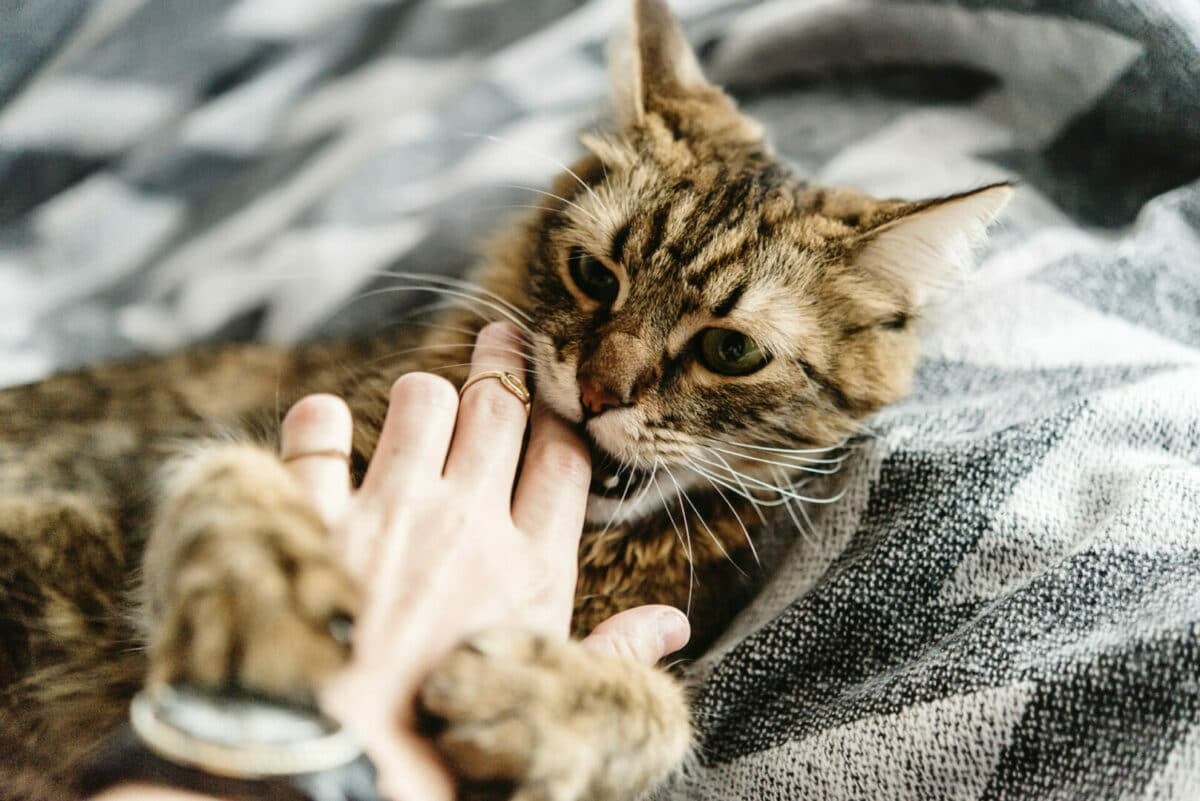When a cat's ears are clean and healthy, they are free from scabs, flaky skin, or visible debris. The pinna (ear flap) is held high and perky with a pale pink color to the skin. Some cats, especially those with diabetes, allergies, or compromised immune systems, are prone to painful, itchy ear infections. These cats will display their discomfort by shaking their head, dragging their face on the floor, scratching with their rear claws, or using their front paws to rub the affected ear(s). You may also notice that the ears have a strong odor and are red and warm to the touch. Discharge can range from waxy tan-yellow, gunky brown, or even black, dry, and crumbly like coffee grounds (in the case of ear mites). These 7 tips will help you stave off infections and keep your cat's ears clean and healthy.
1. Check your cat's ears regularly.
Veterinarians recommend checking your cat's ears as part of a regular health monitoring routine. Check the eyes for cloudiness, the teeth for tartar, the skin for lumps and bumps, and the ears for the signs listed above. Since cats' ears are very delicate and sensitive, try to avoid touching them and just peek at the inside, outside, and around the base. Do NOT insert anything into the ear canal!
2. Avoid cleaning cat ears.
Never try to clean your cat's ear canal. Only wipe the outer ear to remove dirt and debris. There are even veterinary-grade wipes to make the process simple. But remember: never put ear rinse or objects (cotton, Q-tips) into the ear canal. Just gently wipe the outer ear. If you think your cat’s ears need a thorough cleaning, consult your vet.
3. Keep your cat flea-free.
Fleas can cause itching and irritation all over your cat's body, including around the ears. Monitor for live fleas and flea dirt, and use a safe, veterinary-approved repellant.
4. Monitor for mites.
Ear mites are one of the most common causes of itchy, dirty cat ears. While most common in kittens and cats that live outdoors, mites are highly contagious. Cats with ear mites may shake their heads and scratch around their ears and neck. Ear mites cause black discharge that resembles coffee grounds. You may even be able to see the tiny white mites moving around if you examine the discharge with a magnifying glass. If you suspect your cat has ear mites, see your vet as soon as possible for treatment and to prevent these parasites from spreading to your other pets.
5. Recognize the signs of a middle or inner ear infection.
Middle or inner ear infections can have frightening symptoms, including a head tilt, drooping on one side of the face, squinting, a raised third eyelid, unequal pupil sizes, abnormal eye movements, and difficulty walking. These infections require special treatment only your veterinarian can provide, but they usually heal without any permanent damage.
6. Avoid common allergens.
If your cat is scratching around the head and ears, it could be an allergy to food or the environment. WebMD lists the following substances among the most common allergens in cats:
-
Pollen from trees, grass, weeds, mold, mildew, and dust
-
Beef, fish, chicken, dairy
-
Fleas and flea-control products
-
Prescription drugs
-
Perfumes
-
Cleaning products
-
Cigarette smoke
-
Fabrics
-
Rubber and plastic materials
7. Visit your vet.
The best way to keep your cat's ears clean and healthy is to see your vet regularly for routine care and whenever you notice signs of trouble. He or she can examine the tiny structures of the ear inside and out as well as offer diet and parasite control recommendations.





